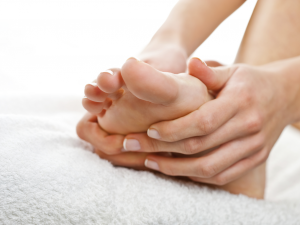Foot 911 Charcot Foot: Dangerous Diabetes Foot Condition Puzzling Doctors
Cases of a debilitating foot condition called Charcot foot are on the rise, but it’s continuously being misdiagnosed, leading to grotesque limb deformities and amputations in diabetic patients nationwide.
Charcot foot, also known as Charcot joint or arthropathy, has been around since the 1800s, but modern doctors are continuously misdiagnosing the once rare foot disorder — a mistake that is leading to an increase in gnarly limb deformities and amputations in diabetic patients across the country.
Named after French neurologist Jean-Marie Charcot, Charcot foot is a very serious foot condition in which a patient suffering from a neuropathy disorder like diabetes simultaneously experiences an inability to feel pain or sensation in the feet and legs as well as a softening of the bones and joints in the feet and ankles. This then leads to fractures and/or dislocation of the bones and joints in the feet and ankles. Unable to feel the injuries, the patient continues to walk on the fractured or dislocated bones, which quickly leads to deformation of the foot, disability and possibly limb amputation.
Charcot was once a rare disorder, but the American College of Foot and Ankle Surgeons estimates that with more and more people being diagnosed with diabetes (a disease that restricts blood flow to the legs and feet and results in reduced sensation and ability to feel pain), cases of the dangerous foot condition are on the rise.
Why Doctors Aren't Diagnosing Charcot Foot Correctly
The problem doctors have is that because patients with Charcot foot cannot feel any pain in their feet, the symptoms that may alert him or her to a potential issue include redness and swelling of the affected foot. Unfortunately, redness and swelling are signs of many other foot conditions that affect diabetics and others who have neurological issues. Many doctors assume the symptoms are due to an infection and are quick to prescribe antibiotics. Or they believe Charcot foot to be osteomyelitis, which is an infection of the bone. Meanwhile, the patient continues to walk and put weightbearing pressure on the affected foot, unaware that the foot is literally collapsing. The more and more the patient walks on the foot, the more it crumbles, swells and becomes deformed. In fact, bits of broken bone may begin to pierce the skin and create sores that are nearly impossible to heal, as poor blood circulation associated with diabetes and neuropathy disorders impedes the body’s ability to heal ulcerations and open wounds. This downward spiral leads to serious infection, convex or deformed feet and possible amputation.
What Diabetic Patients Can Do To Avoid Charcot Foot Complications
The more and more cases of Charcot foot that are being reported, the more aware doctors are of the potentially fatal condition. However, it may be up to each patient to mention the possibility to his or her doctor.
"Even though it was first described in 1883, the diagnosis and successful treatment of Charcot foot continue to be a challenge because this syndrome is not widely known or understood by the broader medical profession," Lee C. Rogers, D.P.M., co-director of the Amputation Prevention Center at Valley Presbyterian Hospital in Van Nuys, CA, says in a September 2011 issue of Diabetes Care magazine. "Charcot foot is now considered to be an inflammatory syndrome most often seen in patients with diabetes which can be successfully treated in its early stages."
When caught early on, surgical procedures to help Charcot foot can help the vast majority of patients walk normally again and avoid deformity or amputation. Therefore, it’s important for diabetic patients who experience any kind of redness or swelling in their feet to contact their doctor or podiatrist as soon as possible and be sure to mention Charcot foot.
For more information on foot health for diabetes and neuropathy patients, check out our Diabetic Foot Care section.
Notice concerning medical entries:
Articles having medical content shall serve exclusively for the purpose of general information. Such articles are not suitable for any (self-) diagnosis and treatment of individual illnesses and medical indications. In particular, they cannot substitute for the examination, advice, or treatment by a licensed physician or pharmacist. No replies to any individual questions shall be effected through the articles.







